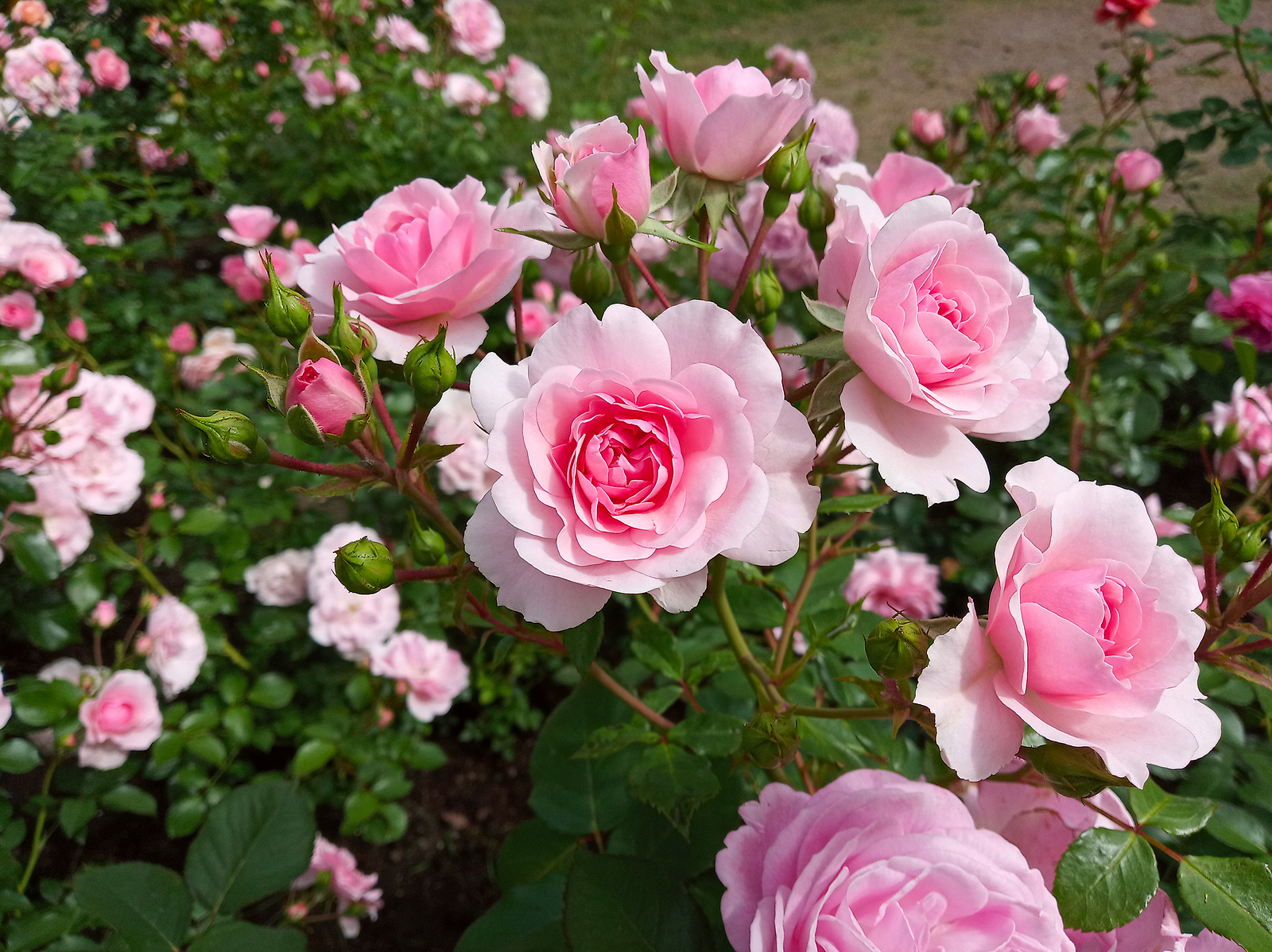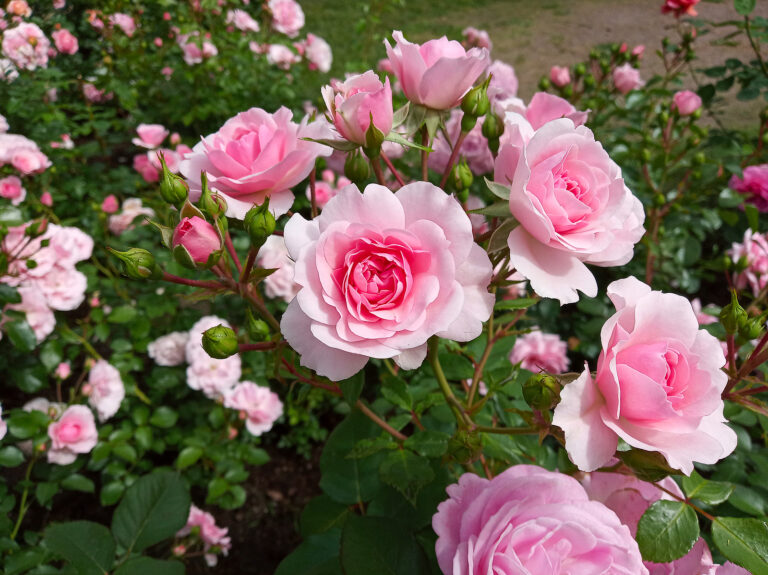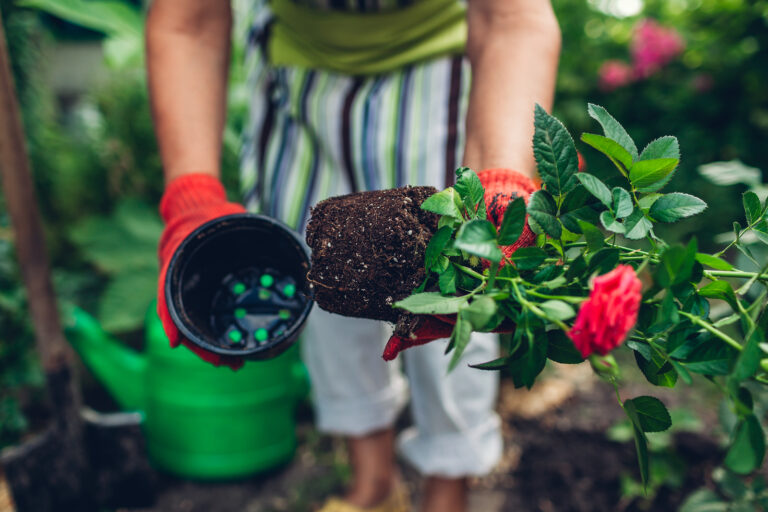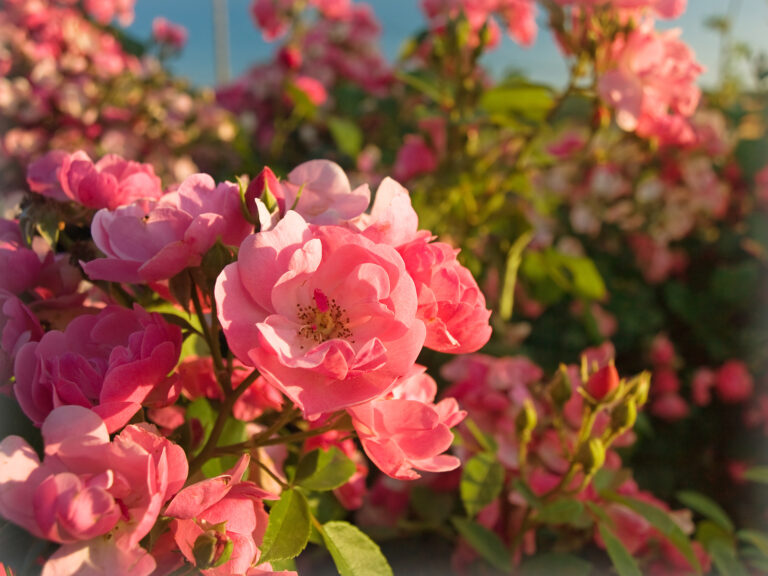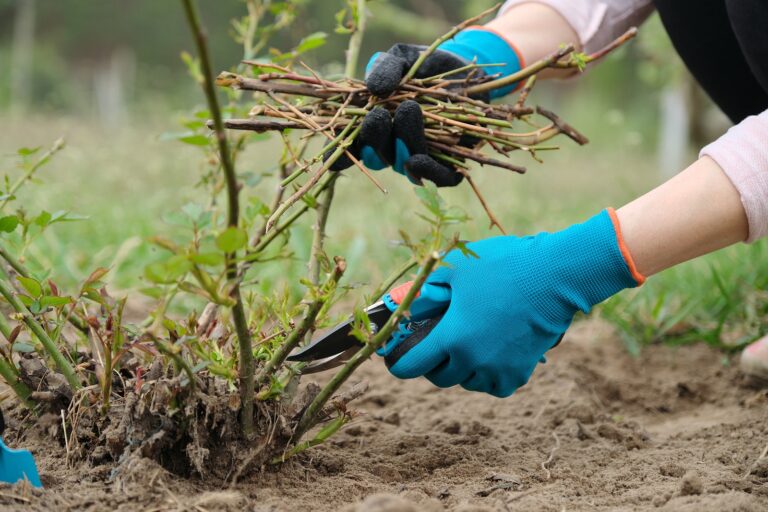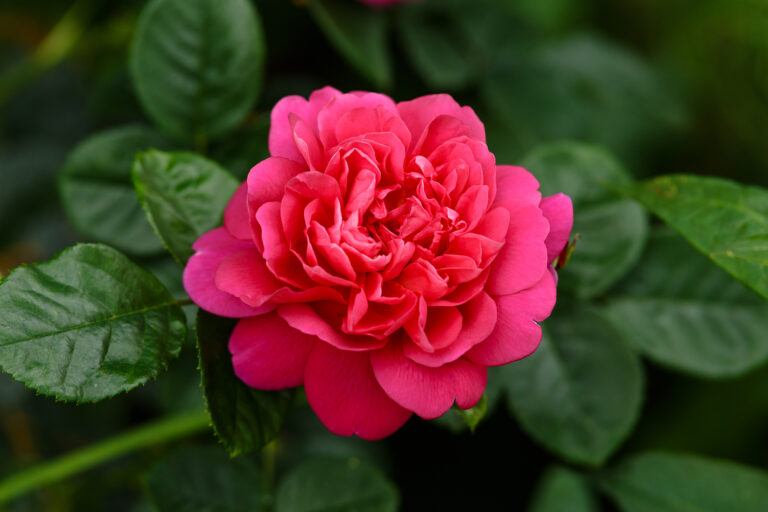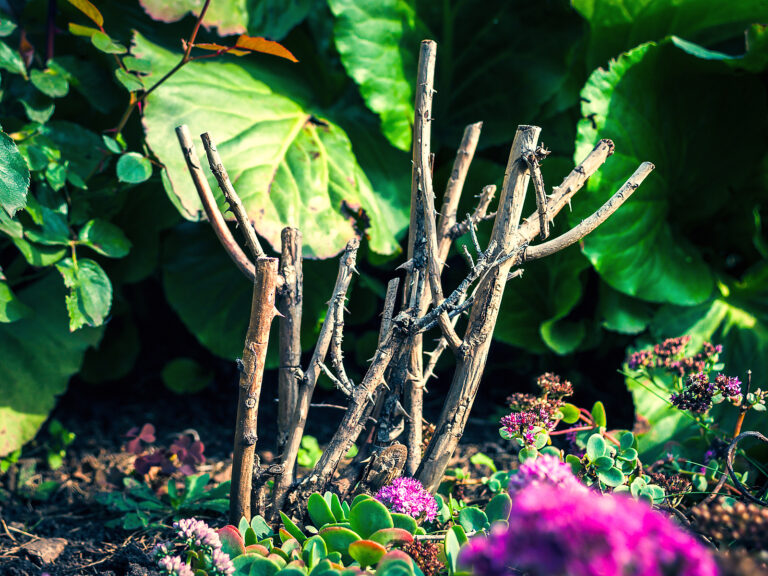Rose Care Basics
Roses want good drainage, lots of sunlight, nutrients, and water.
Many of these needs can be satisfied at planting time.
- Plant roses in full sun—at least 8 hours of direct sun each day.
- Plant roses in loamy soil; that is soil rich in organic matter called humus. You can create loamy soil by adding aged compost or commercial organic planting mix to your planting beds. Loamy soil is both moisture-retentive and well drained.
- Feed the soil and roses by spreading aged compost around roses at least twice a year—in spring and again in mid-summer. Aged compost—which is essentially the same as commercial organic planting mix—contains the major and minor nutrients roses need.
- Supplement soil nutrients by adding a commercial rose food to the soil in spring and again in summer. A fertilizer NPK of about 5-10-5 will promote rose blooms.
- Keep the soil evenly moist. Loamy soil will hold soil moisture and allow it to drain as well—the moisture is held in soil particles; loamy soil does not puddle. Water established roses slowly and deeply—once every 7 to 10 days should be right in moderate summer temperatures.
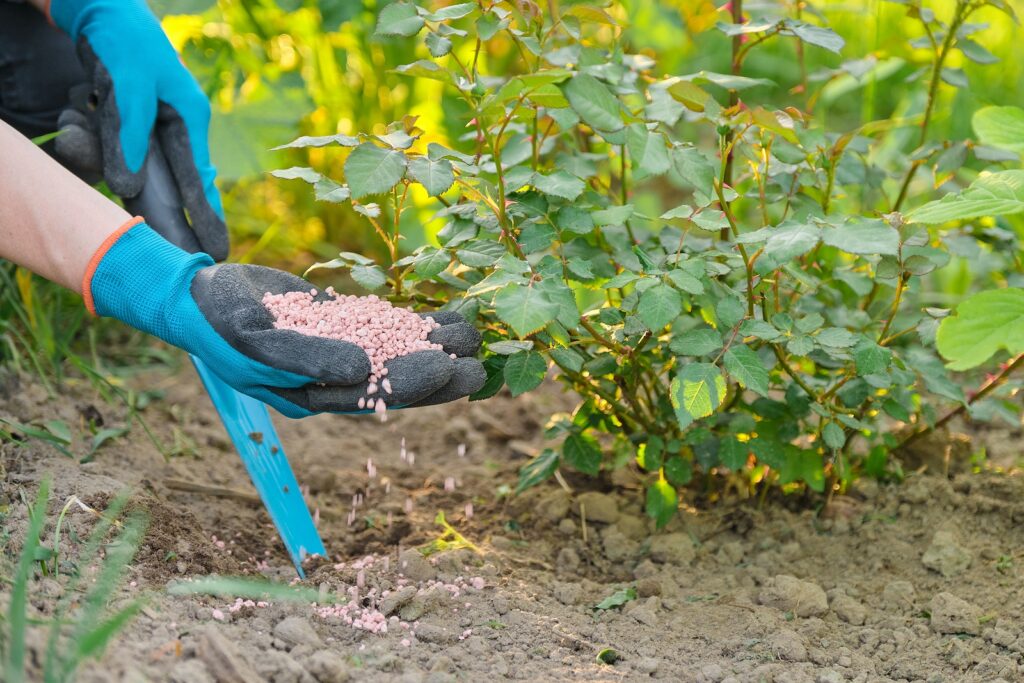
Caring for established roses
Feeding roses
- Roses want a steady supply of balanced, slow-release nutrients. Organic fertilizers and mulches release nutrients slowly. Commercial organic fertilizers designated for roses will release nutrients throughout the growing season. A ratio of about 5-10-5 or thereabouts will promote blooming. Follow label direction; in long, hot summer regions three fertilizers application in a year would not be out of the ordinary; in cool-summer regions, one application a year is common.
- Aged compost or commercial organic planting mix will contain all of the nutrients needed. Spread these as a mulch around roses. You can not overapply compost; add 2 to 3 inches (5-7.5cm) of compost to the planting bed twice a year or more often; when the mulch disappears, add more. Be careful to keep mulch back from the crown of the plant to avoid crown rot.
- Aged steer manure is an organic fertilizer. Add aged manure to planting beds at the end of the growing season; this will allow winter rain and snow to carry the manure deep in the soil. Manures contain natural salts; if your soil is alkaline do not apply manure more than once every three years.
- Synthetic fertilizers for roses can be used. Synthetic fertilizers are usually petroleum-based and fast-acting. If you desire quick greening of leaves, use synthetic fertilizer, but do not overapply it; synthetic fertilizers can burn plant roots if applying too liberally. A synthetic formula of 3-1-2 or 4-1-2 will promote leafy green growth. Follow the label direction and err on the side of under-application.
- A soil analysis once every one or two years can help you gauge the amount of fertilizer and amendments your roses need. A soil analysis will tell you if the soil pH is right for roses or if an adjustment is needed; soil pH affects the release of nutrients to plant roots.
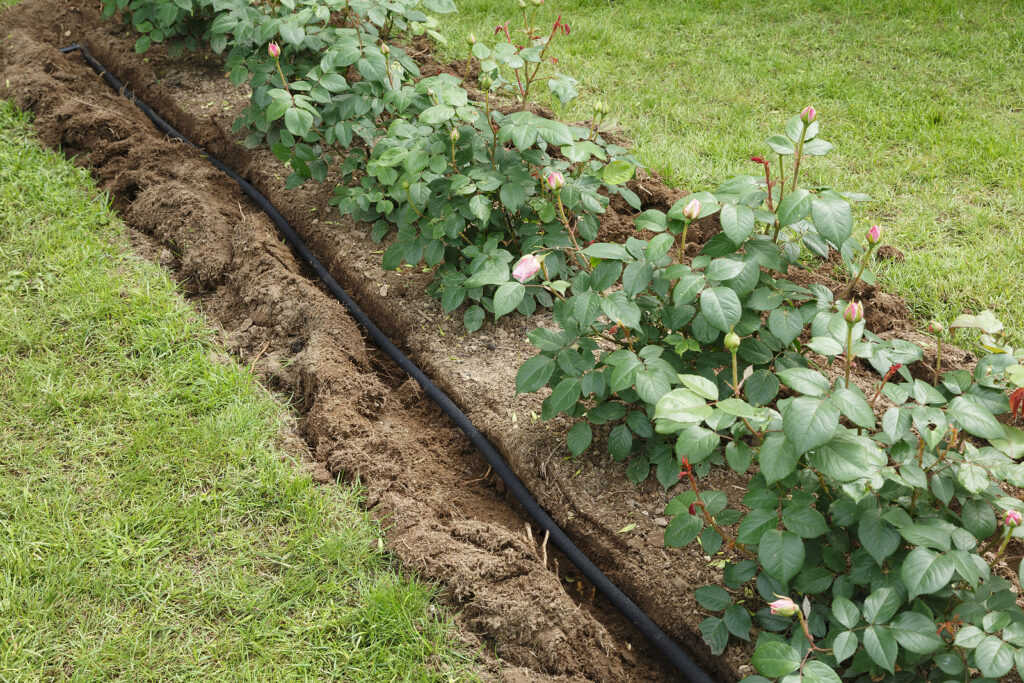
Watering roses
- Rose need even watering. That means the soil should not be wet and it should not go dry. Roses that have been in the ground for three or four years will be drought-tolerant, especially if they are in a loamy soil. While a rose may be drought-tolerant, soil too dry will stress the plant. A stressed plant will not be healthy.
- Roses need about 1 to 2 inches (2.5-5cm) of water each week in loamy soil; in sandy soil, they will need more. One inch of water spread over one square yard is about 5 gallons. If the rose plant has a soil basin formed around the crown of the plant, 5 gallons of water each week will be more than sufficient to keep loamy soil moist during summer weather.
- Mulching around roses will slow soil moisture evaporation. Mulching with aged compost is a good way to keep the soil evenly moist.
- Water roses at the base of the plant; do not water roses overhead unless you occasionally want to clean dust from the leaves. Water in the morning; this will allow moisture to seep into the soil and not stand on the soil or on leaves. Keeping rose leaves dry will help prevent fungal diseases which are often spread by splashing water.
- Water roses with a soaker hose or drip irrigation, especially if you have several roses. If you have a single rose, set a hose at the base of the plant and let the water slowly dribble into the ground. Soaker hoses emit water along the length of the hose. Drip irrigation delivers water via emitters which can be set at the base of each plant. Drip emitters are labeled according to the gallon of water delivered per hour.
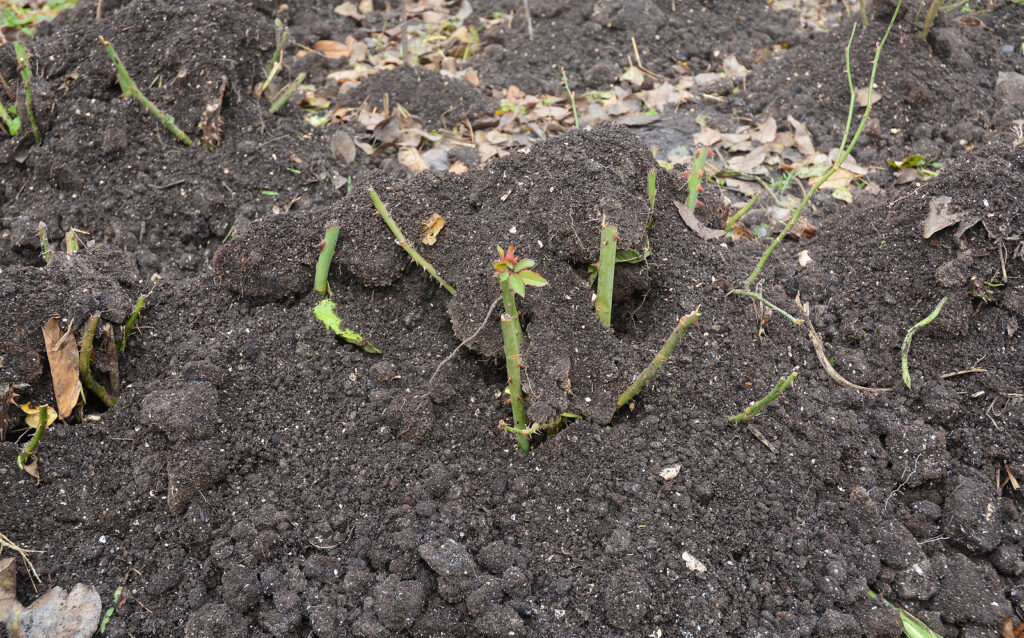
Winterizing roses
Protecting roses for winter weather depends on the severity of winter weather and the rose. Here are protection suggestions by Zone:
- Zone 5 and colder: In late autumn before the first snowfall, mound soil or compost around all roses to a height of 12 inches (30cm). In Zones 4 and 5 hardy roses such as rugosas, Moden, Canadian Explorer, and most David Austins, will survive a normal winter with soil or compost mounding. Hybrid teas and less hardy roses should have their tops also protected: tied the canes together and wrap burlap and twine around the canes. Remove the covering when the snow melts in spring; hose the mounded soil away when temperatures are in the 50sF. If you lose a rose to freezing weather, replace it with a cultivar adapted to your climate. (Cold hardy roses include rugosas, albas, and the Buck shrub roses.)
- Zones 3-4: Grow own-root roses whenever possible; these will often re-sprout if top-growth is killed by a freeze. When growing grafted roses, set the graft or bud union 3 inches (7.5cm) below the soil line at planting time.
- Zones 6-8: In late fall as soon as freezing weather arrives, mound 4 to 8 inches (10-20cm) of soil, compost, or mulch around each rose. Hose the mounded soil away in early spring.
- Zones 9 and warmer: No mounding is needed unless the winter is uncommonly cold, then you can add 3 to4 inches of mulch around the base of each rose.
- All Zones: As a general rule, stop applying nitrogen fertilizers 6 to 8 weeks before the average date of the first killing frost. Quit trimming and deadheading 6 weeks before the first killing frost; this allows tissue to go dormant before the freeze.
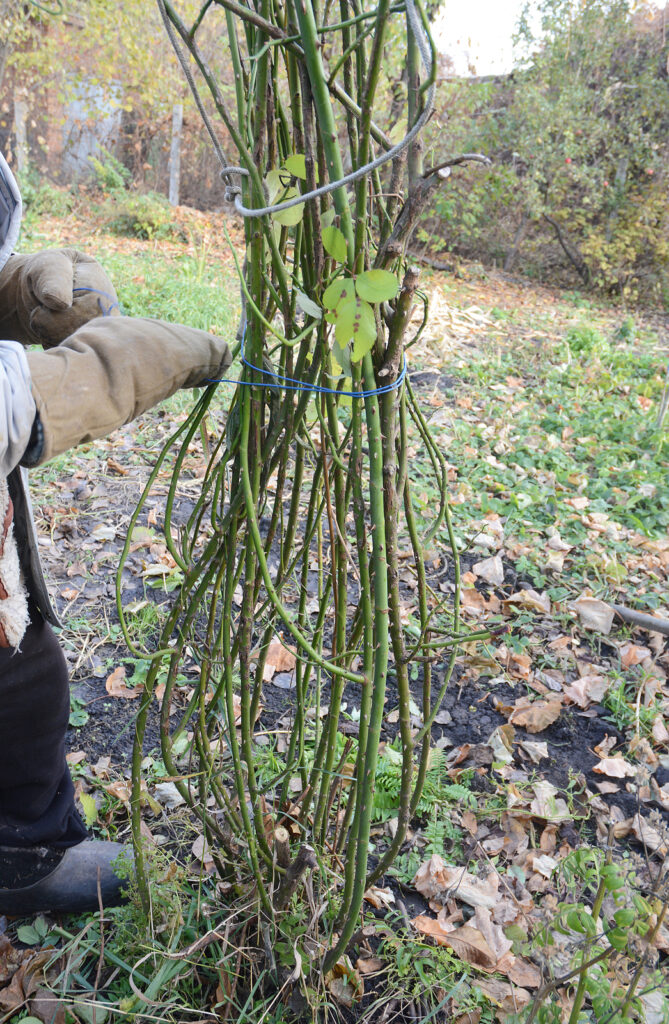
Rose wind protection
Roses must be protected from the wind. Wind can draw moisture from rose leaves and canes during the warm time of the year. Winter wind can damage or uproot roses. Here are ways to protect roses from wind damage:
- Plant roses out of constant breezes. Plant where a wall, fence, or hedge will break the wind. This will keep roses from drying out in the summer and from being uprooted in winter.
- In winter, tie canes loosely in a bundle with soft twine or horticultural tape. In cold winter regions, wrap burlap around the bundle for further protection. Climbing roses should be released from their supports and bundled in regions where freezing weather comes in winter.
- Where freezing temperatures are not imminent, long-caned roses can be pruned back before being bundled. Do not trim roses where cold temperatures are interspersed with warm temperatures, warm temperatures can stimulate growth and leave the plant vulnerable to cold temperatures.
- Remove roses from bundles after the average date of the last killing frost in spring.
- Where snow does not fall, but the wind blows in winter, do not let roses dry out; keep the soil evenly moist even in winter.
Also of interest:

